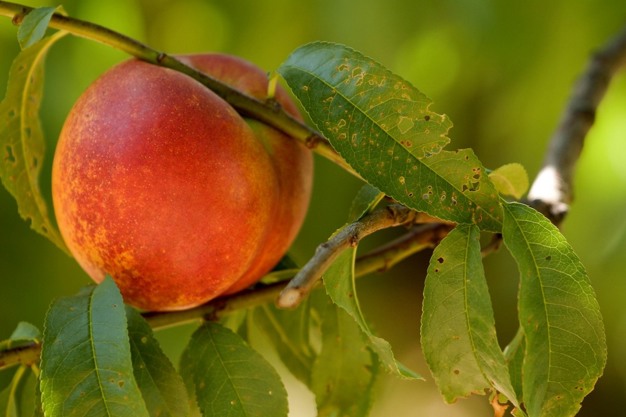The Ozark Mango™, the seventh nectarine introduced by the Arkansas Fruit Breeding Program, is a yellow-fleshed and standard-acid-level nectarine tailored for growers in the Southeast or Mid-South of the United States.
Ozark Mango™ is typically harvested around July 1 at the Fruit Research Station in Clarksville, which is similar to Bradley and about one week before Bowden and Amoore Sweet nectarines.
Margaret Worthington, director of the Fruit Breeding Program for the Arkansas Agricultural Experiment Station, the research arm of the University of Arkansas System Division of Agriculture: “Over 13 years of trials, Ozark Mango had an average Brix of 15 percent, indicating that it is very sweet. It also has a pleasant aroma and flavor that I would describe as ‘tropical’ or ‘mango-like’.”
 The Ozark Mango is a new nectarine from the Arkansas Fruit Breeding Program.
The Ozark Mango is a new nectarine from the Arkansas Fruit Breeding Program.
(U of A System Division of Agriculture / photo by Paden Johnson)
A ripe Ozark Mango measures about 3 inches in diameter with about 65 percent of its surface taking on a blushed color. When sliced open, it reveals a “beautiful yellow-orange flesh that complements its outstanding flavor,” Worthington said.
Worthington noted that Ozark Mango is similar to other clingstone, non-melting flesh varieties and exhibits “excellent post-harvest potential,” allowing for storage between 14 to 21 days while maintaining its quality. A clingstone and non-melting nectarine means that the fruit’s flesh adheres tightly to the pit and maintains its firm texture even when fully ripe, without becoming soft.
“Ozark Mango exhibits remarkable resilience in the face of challenging bacterial spot pressure at the Fruit Research Station,” Worthington said. “It shows no cracking on the fruit while displaying a tolerance to symptoms on the leaves.” The new variety is estimated to be a mid-chill nectarine appropriate for areas with 600 to 800 chill hours a year, she added.
For more information:
Technology Commercialization office
Tel.: +1 479-575-3953
Email: agritco@uada.edu
